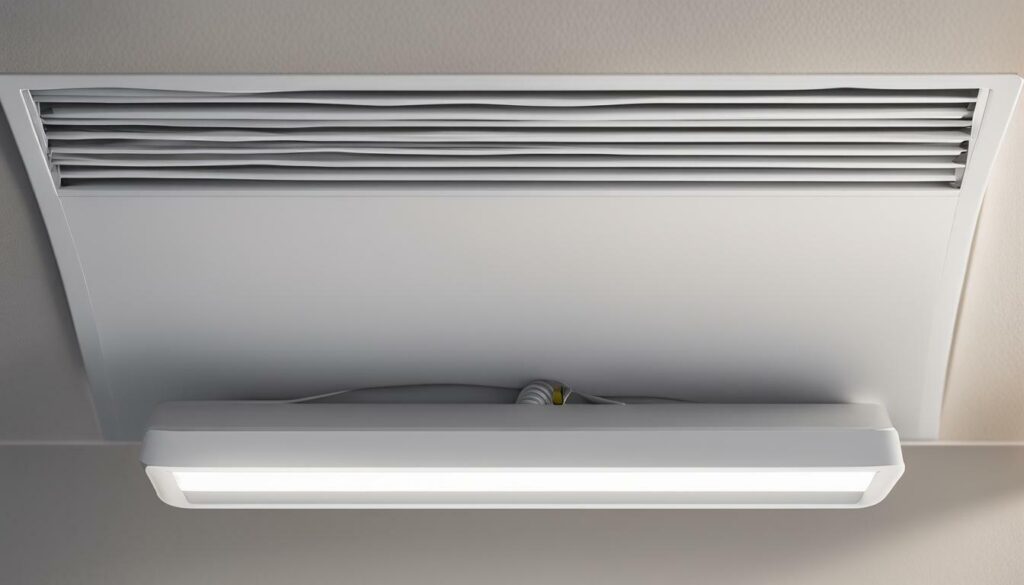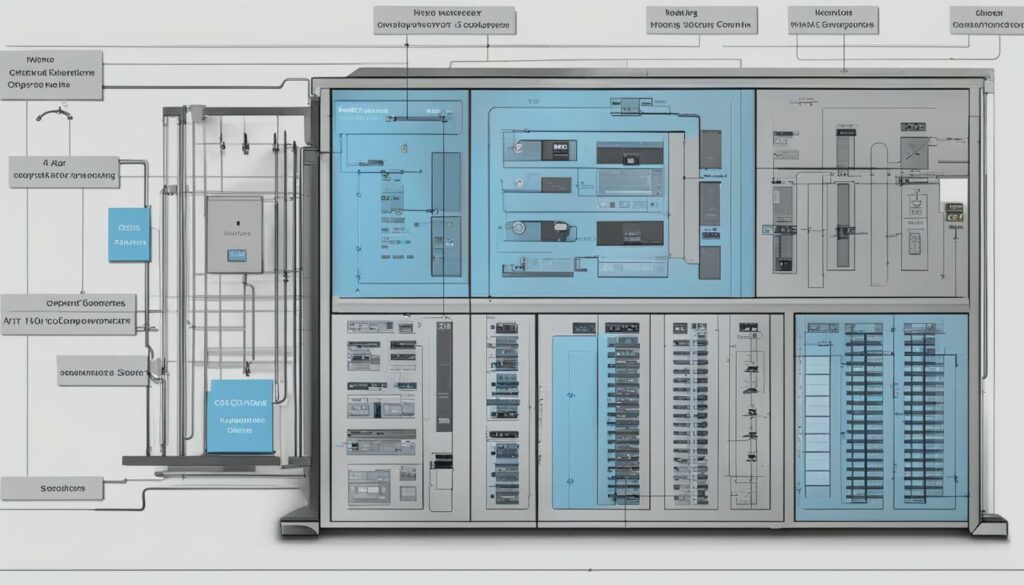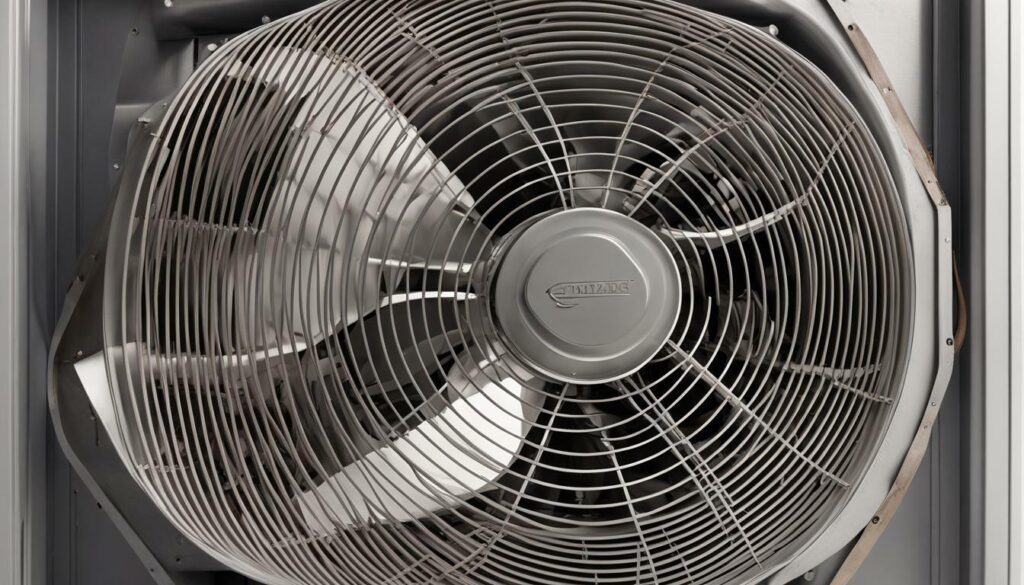As a truck driver, maintaining a comfortable and stable temperature inside your Freightliner Cascadia is crucial, regardless of the external climate conditions. The HVAC duct temperature sensor plays a vital role in this process, acting as a monitor to ensure that your truck’s cabin remains at the desired temperature.
But where exactly is the HVAC duct temperature sensor located in the Freightliner Cascadia? In this section, we’ll provide you with detailed information on its placement and help you locate it easily.
Key Takeaways:
- The HVAC duct temperature sensor is an essential component of the Freightliner Cascadia’s HVAC system.
- It helps to maintain a stable and comfortable temperature inside the cabin.
- In this section, we’ll provide detailed information on where to locate the sensor.
Understanding the Importance of the HVAC Duct Temperature Sensor
Before we dive into the location of the HVAC duct temperature sensor in the Freightliner Cascadia, let’s first understand why it’s an essential component of the HVAC system. This sensor plays a crucial role in maintaining a stable and comfortable environment inside the vehicle cabin, regardless of the external climate conditions.
The HVAC duct temperature sensor is responsible for measuring the temperature of the air passing through the HVAC system. It relays this information to the system’s control module, which adjusts the temperature and airflow based on the desired settings. Without the duct temperature sensor, the system would be unable to accurately regulate the temperature, resulting in uncomfortable conditions for the driver and passengers.
Proper installation of the HVAC duct temperature sensor is crucial for optimal performance. A faulty installation can result in inaccurate temperature readings and inefficient system operation. When installing the sensor, it’s important to follow the manufacturer’s instructions carefully and ensure that it’s securely fastened in the proper location.
In summary, the HVAC duct temperature sensor is a critical component of the Freightliner Cascadia’s HVAC system, responsible for maintaining a comfortable and stable environment inside the vehicle cabin. Proper installation is essential for optimal performance, ensuring accurate temperature readings and efficient system operation.
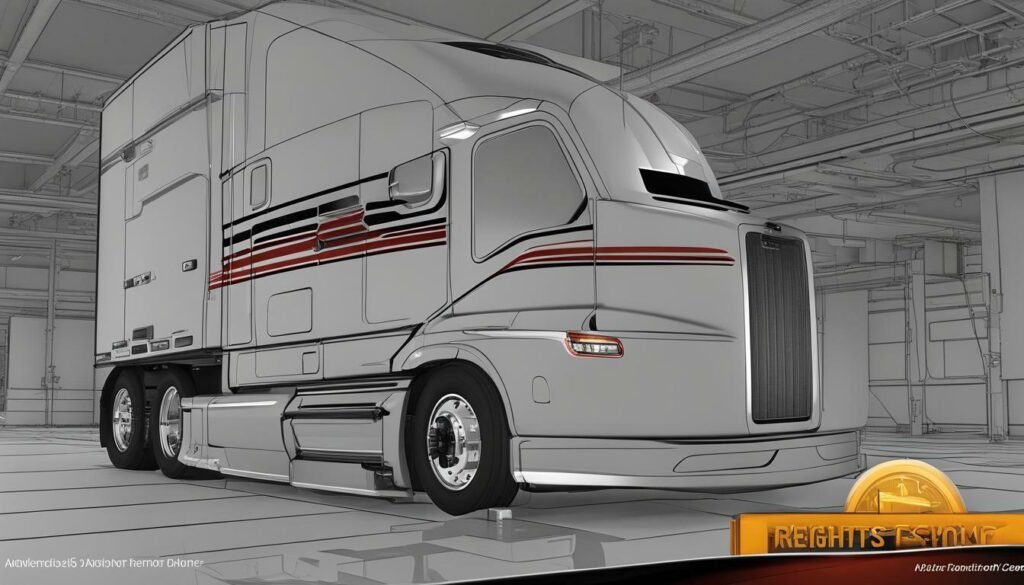

Locating the HVAC Duct Temperature Sensor in the Freightliner Cascadia
If you’re looking to locate the HVAC duct temperature sensor in your Freightliner Cascadia, follow these step-by-step instructions:
| Step | Description |
|---|---|
| 1 | Begin by removing the floor mat on the passenger side of the vehicle. |
| 2 | Next, remove the kick panel located directly in front of the passenger seat. |
| 3 | Once the kick panel has been removed, you should be able to see the HVAC duct temperature sensor located underneath the dashboard. |
It’s important to note that proper maintenance of your Freightliner Cascadia’s HVAC system is key to ensuring optimal performance and comfort. Regularly checking and cleaning the sensor is recommended to avoid potential issues. Additionally, it’s important to follow manufacturer guidelines for any necessary repairs or replacements.


With these simple steps, you can easily locate the HVAC duct temperature sensor in your Freightliner Cascadia and ensure that your HVAC system is functioning properly. Don’t forget to perform regular maintenance to keep your system operating optimally and provide a comfortable driving experience.
Troubleshooting the HVAC Duct Temperature Sensor in the Cascadia
If you’re experiencing issues with your Freightliner Cascadia’s HVAC system, it’s essential to understand how to troubleshoot the HVAC duct temperature sensor. Some common problems may include erratic temperature readings, inefficient cooling, and irregular fan speed.
One of the first things to check is the sensor’s placement. The sensor should be installed correctly and securely in the HVAC duct to provide accurate readings. Ensure that there are no obstructions or debris in the duct that may be interfering with the sensor’s function.
Another potential issue is a faulty sensor. If the sensor is not working correctly, it may produce incorrect temperature readings or fail to function altogether. In this case, the sensor may need to be replaced.
It’s also a good idea to check the wiring and connections to ensure that they are secure and not damaged. Loose or damaged wiring can cause issues with the sensor’s functionality and overall performance of the HVAC system.
If none of these solutions fix the problem, it may be worth seeking the assistance of a professional technician with expertise in HVAC systems for Freightliner Cascadia. They will be able to diagnose the issue accurately and provide the necessary repairs or replacements.
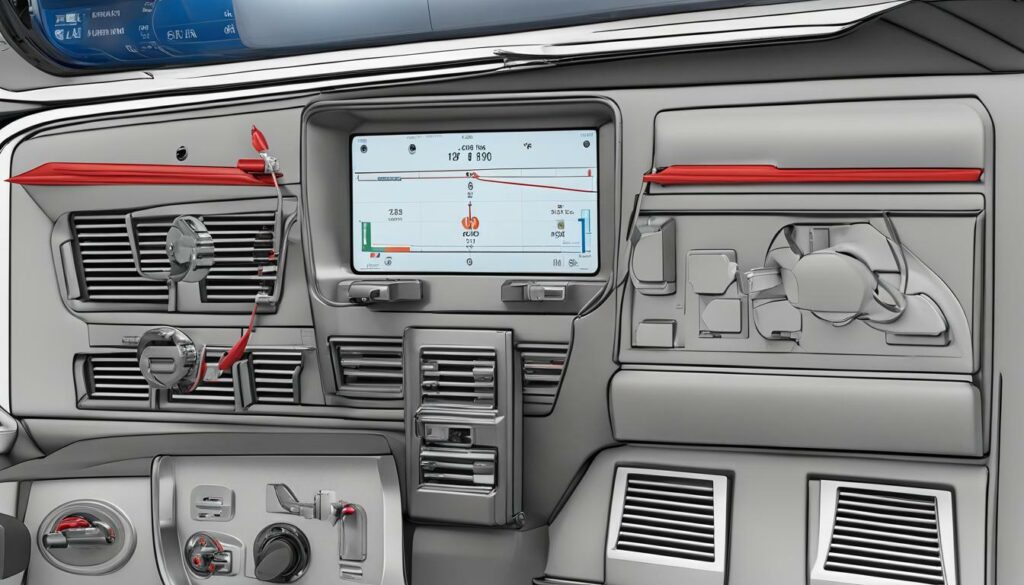

Replacing the HVAC Duct Temperature Sensor in the Freightliner Cascadia
If you’re experiencing issues with your HVAC system in the Freightliner Cascadia, it might be time to replace the HVAC duct temperature sensor. Here’s your step-by-step guide to replacing this critical component:
- Locate the sensor: The HVAC duct temperature sensor is typically located near the evaporator core on the driver’s side of the cab. Refer to the manufacturer’s manual for precise location instructions.
- Remove the old sensor: First, disconnect the battery to ensure safety. Then, remove the sensor’s electrical connector. Gently wiggle and pull the sensor out of the ductwork.
- Prepare the new sensor: Compare the new sensor to the old one to ensure they are the same model. If necessary, remove any packaging or caps from the new sensor.
- Install the new sensor: Gently slide the new sensor into the ductwork. Ensure that it is secure and snug in the ductwork. Connect the electrical connector to the new sensor.
- Test the new sensor: Reconnect the battery, and start the truck. Test the new sensor by adjusting the temperature controls and monitoring the HVAC system’s performance.
By following these simple steps, you can ensure that your Freightliner Cascadia’s HVAC system is running smoothly and efficiently.
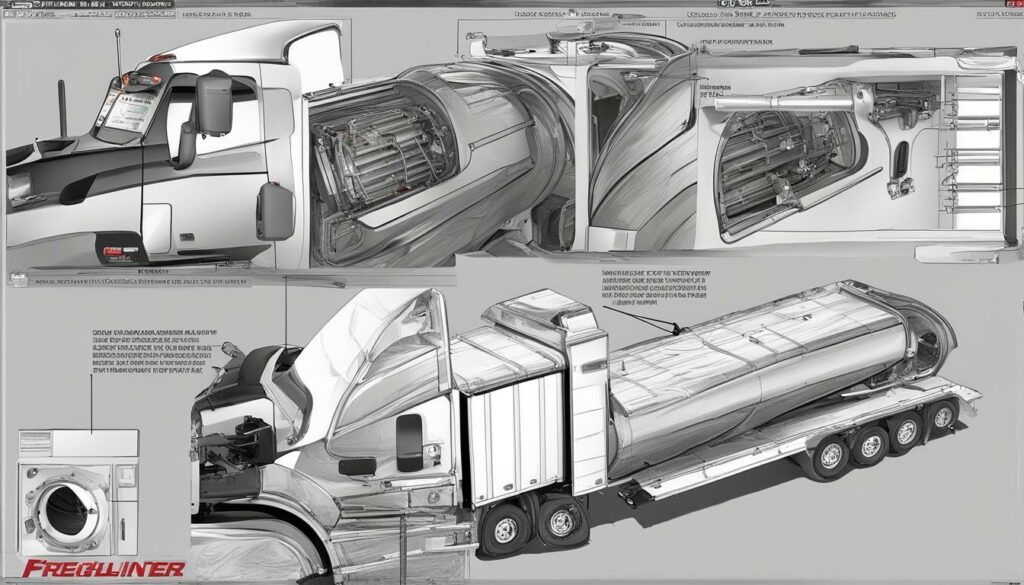

Maintenance Tips for the Freightliner Cascadia HVAC System
Proper maintenance is crucial to ensure that your Freightliner Cascadia’s HVAC system operates efficiently. By following these maintenance tips, you can extend the life of your HVAC system and avoid costly repairs.
Check Filters Regularly
Your HVAC system’s filters play a critical role in keeping the air in your cabin clean and free of contaminants. Dirty or clogged filters can cause your system to work harder than it needs to, which in turn can lead to higher fuel consumption and premature wear on your HVAC components. Check your filters regularly and replace them as recommended by the manufacturer.
Clean Condensers and Evaporators
The condenser and evaporator in your HVAC system are responsible for removing heat and moisture from the air, respectively. Over time, dirt and debris can accumulate on these components, reducing their efficiency and potentially causing damage. Use a soft brush or compressed air to clean your condenser and evaporator periodically, or have it done by a professional.
Check for Leaks
Leaks in your HVAC system can lead to reduced efficiency and potentially damage your components. Prior to each season, check your system for leaks and repair them as needed. A professional HVAC technician can assist you in identifying and repairing leaks if you’re unsure how to proceed.
Regularly Inspect Belts and Hoses
Belts and hoses in your HVAC system can wear over time, increasing the risk of failure and potentially causing damage to other components. Inspect your belts and hoses regularly and replace them according to the manufacturer’s recommendations. Your owner’s manual should provide specific guidance on the inspection and replacement of belts and hoses.
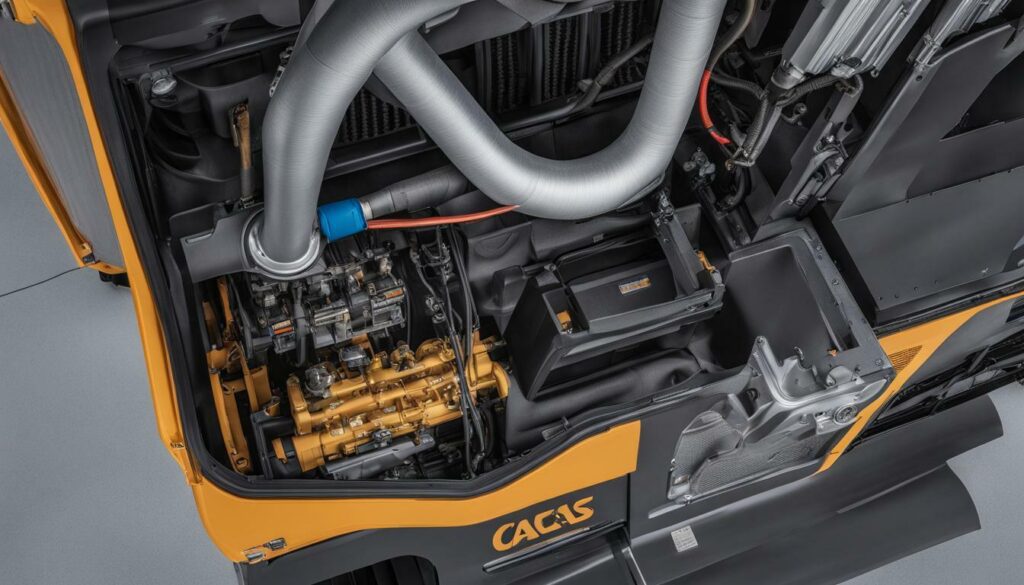

By following these simple maintenance tips, you can keep your Freightliner Cascadia’s HVAC system operating efficiently for years to come. Regular maintenance can save you money in the long run and help ensure your system is functioning optimally, keeping you comfortable no matter where the road takes you.
Additional Considerations for HVAC Performance in the Cascadia
Proper installation of the HVAC duct temperature sensor is crucial to ensure optimal performance of the entire Freightliner Cascadia HVAC system. The sensor should be installed in a location where it can accurately measure the temperature of the air passing through the duct.
In addition to the temperature sensor, there are other factors that can impact the performance of the HVAC system. These include air filters, refrigerant levels, and overall system maintenance. Regularly replacing air filters and checking the refrigerant levels can help prevent issues before they arise.
It’s also important to note that the HVAC duct temperature sensor is just one component of the larger HVAC system in the Freightliner Cascadia. Understanding the proper function and maintenance of the entire system is essential to keeping it running smoothly and efficiently.


If you’re experiencing issues with your HVAC system despite proper installation and maintenance, it may be time to consult with a professional mechanic. They can provide further guidance on troubleshooting and repair options.
Enhancing Comfort and Efficiency with the HVAC Duct Temperature Sensor
One of the most critical components of the Freightliner Cascadia’s HVAC system is the HVAC duct temperature sensor. This sensor plays a vital role in maintaining a comfortable and consistent cabin temperature, regardless of the outside weather conditions. By detecting the temperature inside the ducts, the sensor can make necessary adjustments to the system to provide optimal heating or cooling performance.
The HVAC duct temperature sensor is located in the ductwork of the HVAC system, typically near the evaporator (AC) or heater core. Proper placement of the sensor is essential to ensure accurate temperature readings and optimal system performance. If the sensor is not installed correctly, it may provide inaccurate readings, which can result in poor HVAC system performance and decreased fuel efficiency.
By replacing or repairing the HVAC duct temperature sensor in your Freightliner Cascadia, you can improve the efficiency and comfort of your vehicle’s climate control system. This will not only ensure optimal performance but also reduce the risk of breakdowns that can lead to costly repairs.
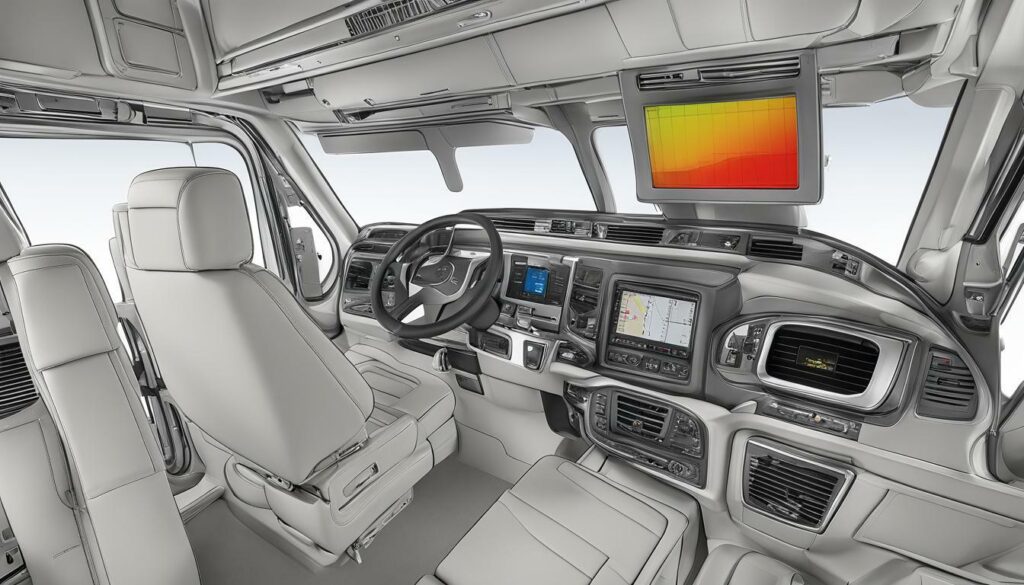

Maintaining the HVAC system in your Freightliner Cascadia is crucial to ensure optimal performance and comfort, especially during extreme weather conditions. Regular maintenance and inspections can help identify and resolve issues before they turn into costly repairs or impact the performance of your vehicle’s climate control system.
Stay on top of your HVAC system’s maintenance needs by scheduling regular inspections with an experienced mechanic. By following these tips and ensuring the proper location and installation of your Freightliner Cascadia’s HVAC duct temperature sensor, you can enhance comfort and efficiency while enjoying a smooth and comfortable ride.
Understanding the HVAC System in the Freightliner Cascadia
As a freight truck driver, you spend a significant amount of time on the road, and your comfort is essential to ensure a smooth and safe driving experience. The HVAC (heating, ventilation, and air conditioning) system in your Freightliner Cascadia plays a vital role in maintaining a comfortable environment inside the cabin, regardless of the external climate conditions.
The HVAC system in your Freightliner Cascadia comprises several components, including the HVAC duct temperature sensor, blower motor, compressor, and condenser, among others.
The HVAC duct temperature sensor is responsible for monitoring the air temperature inside the duct and transmitting the data to the HVAC system’s control unit. Based on this data, the system adjusts the temperature and airflow to maintain a stable and comfortable environment inside the vehicle cabin.
However, like any other component of your vehicle, the HVAC system in the Freightliner Cascadia may develop issues from time to time, leading to reduced performance and overall comfort. Therefore, understanding how to troubleshoot common issues that may arise with the HVAC system is crucial in ensuring optimal performance and comfort while driving.
Some of the common issues that may occur with the HVAC system in the Freightliner Cascadia include poor airflow, strange noises, and inadequate cooling or heating. In most cases, these issues may be caused by faulty sensors, clogged air filters, or worn out components.
If you notice any problems with your HVAC system, it’s essential to troubleshoot them immediately to prevent further damage. However, it’s crucial to note that some issues may require the services of a professional mechanic to fix properly.
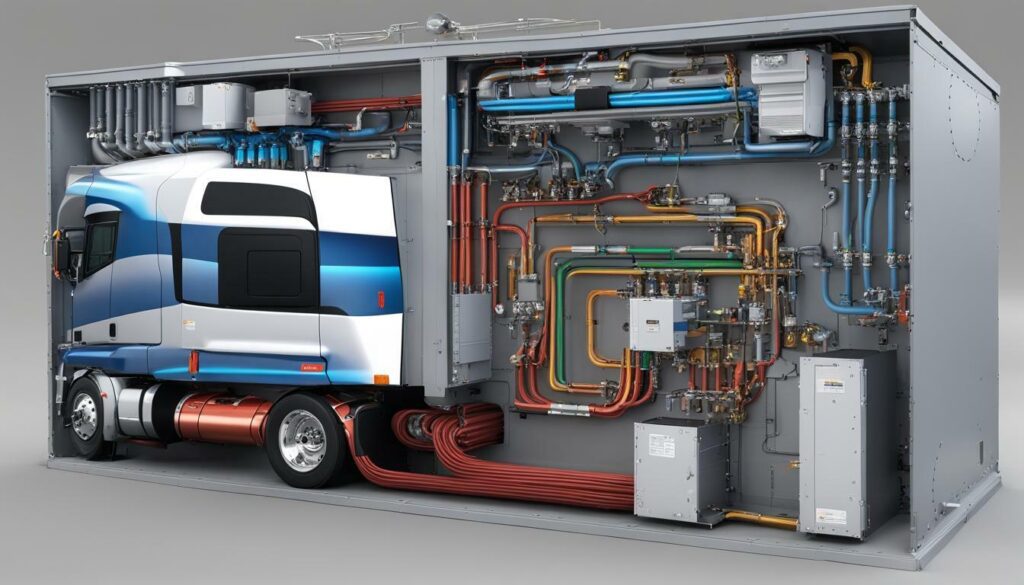

Regular maintenance of your Freightliner Cascadia’s HVAC system is also vital in ensuring its longevity and optimal performance. This includes regular inspection and cleaning of air filters, checking for leaks, and ensuring that all components are working correctly.
By following the proper maintenance and troubleshooting procedures, you can enhance the performance and efficiency of your Freightliner Cascadia’s HVAC system and enjoy a comfortable and stress-free driving experience.
Frequently Asked Questions about the HVAC Duct Temperature Sensor in the Cascadia
If you still have questions about the HVAC duct temperature sensor in your Freightliner Cascadia, take a look at these frequently asked questions.
Where is the HVAC duct temperature sensor located in the Freightliner Cascadia?
The HVAC duct temperature sensor is typically located in the air delivery section of the HVAC duct system. It can be found near the evaporator or in the housing surrounding the evaporator.
What is the purpose of the HVAC duct temperature sensor?
The HVAC duct temperature sensor is a critical component of the Cascadia’s HVAC system. It helps to regulate the temperature inside the cabin by measuring the temperature of air passing through the ducts. This information is then used by the HVAC system to adjust the temperature as necessary to maintain a comfortable environment for passengers and drivers.
How do I know if my HVAC duct temperature sensor needs to be replaced?
If your HVAC system is not functioning properly or is producing inconsistent temperatures, it may be a sign that the HVAC duct temperature sensor needs to be replaced. You should consult a certified technician to diagnose the issue and replace the sensor if necessary.
Can I replace the HVAC duct temperature sensor on my own?
While it is possible to replace the HVAC duct temperature sensor on your own, it is not recommended unless you have experience working on HVAC systems. It is best to consult a certified technician who has the necessary tools and expertise to safely and effectively replace the sensor.
How often should I have my HVAC system serviced?
Regular maintenance of your HVAC system can help to prevent issues before they occur and ensure optimal performance over time. It is generally recommended to have your HVAC system serviced annually, or more frequently if you notice any issues or changes in performance. Consult your owner’s manual or a certified technician for specific recommendations based on your vehicle’s usage patterns and operating environment.
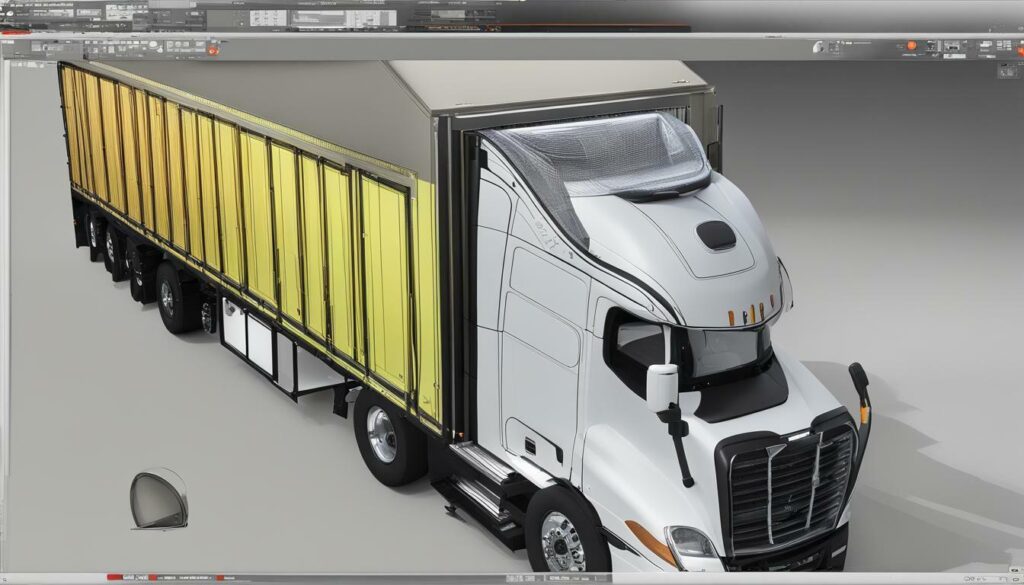

Conclusion
Having a well-functioning HVAC system in your Freightliner Cascadia is essential for maintaining a comfortable environment while driving. The HVAC duct temperature sensor plays a critical role in ensuring that the temperature inside the cabin remains stable and comfortable regardless of the climate conditions outside.
In this article, we have provided detailed information on how to locate the HVAC duct temperature sensor in the Freightliner Cascadia, as well as insights into its importance and installation process. We have also covered troubleshooting and maintenance tips, along with additional considerations that can impact the system’s performance.
By following the tips and best practices outlined in this article, you can help ensure that your HVAC system operates reliably and efficiently, providing optimal comfort while driving. So, take action today and make sure your Freightliner Cascadia’s HVAC system is functioning optimally.
FAQ
Q: Where is the HVAC duct temperature sensor located in the Freightliner Cascadia?
A: The HVAC duct temperature sensor in the Freightliner Cascadia is typically located near the air ducts, close to the cabin area. It is important to consult your vehicle’s manual for specific instructions on the exact location.
Q: Why is the HVAC duct temperature sensor important in the Freightliner Cascadia?
A: The HVAC duct temperature sensor is crucial for maintaining a stable and comfortable environment inside the vehicle cabin, regardless of the external climate conditions. It helps regulate the temperature and ensures optimal performance of the HVAC system.
Q: How do I locate the HVAC duct temperature sensor in the Freightliner Cascadia?
A: To locate the HVAC duct temperature sensor in the Freightliner Cascadia, follow these steps:
1. Refer to your vehicle’s manual for guidance on the exact location.
2. Open the hood of your truck and locate the air ducts.
3. Look for a small sensor near the air ducts, usually labeled as the HVAC duct temperature sensor.
4. Once located, you can inspect, test, or service the sensor as needed.
Q: What should I do if I’m experiencing issues with the HVAC duct temperature sensor in the Cascadia?
A: If you’re facing problems with the HVAC duct temperature sensor in the Freightliner Cascadia, try the following troubleshooting tips:
1. Check for any loose or damaged connections to the sensor.
2. Inspect the sensor for any signs of physical damage or corrosion.
3. Reset the HVAC system by disconnecting the battery for a few minutes.
4. If the issue persists, consult a certified technician for further diagnosis and repair.
Q: How do I replace the HVAC duct temperature sensor in the Freightliner Cascadia?
A: If you need to replace the HVAC duct temperature sensor in the Freightliner Cascadia, follow these steps:
1. Locate the sensor using the instructions provided in your vehicle’s manual.
2. Disconnect the sensor from its wiring harness.
3. Remove any mounting screws or clips that secure the sensor in place.
4. Install the new sensor and secure it with the appropriate screws or clips.
5. Reconnect the wiring harness to the new sensor.
6. Test the HVAC system to ensure the new sensor is functioning correctly.
Q: What are some maintenance tips for the Freightliner Cascadia HVAC system?
A: To maintain your Freightliner Cascadia’s HVAC system, consider the following tips:
1. Regularly inspect and clean the air filters to ensure proper airflow.
2. Check for any leaks or damage in the air ducts and repair as necessary.
3. Keep the area around the HVAC system clean and free from debris.
4. Schedule regular maintenance checks with a certified technician to identify any potential issues before they become major problems.
Q: Are there any additional considerations for HVAC performance in the Cascadia?
A: Yes, there are a few additional considerations that can enhance HVAC performance in the Freightliner Cascadia:
1. Ensure the HVAC duct temperature sensor is installed correctly, as improper placement can affect performance.
2. Proper insulation of the cabin area can help maintain desired temperatures more efficiently.
3. Regularly calibrate the HVAC system to ensure accurate temperature readings and optimal performance.
Q: How does the HVAC duct temperature sensor contribute to comfort and efficiency in the Freightliner Cascadia?
A: The HVAC duct temperature sensor in the Freightliner Cascadia helps maintain a comfortable environment inside the vehicle cabin by regulating the temperature and ensuring efficient operation of the HVAC system. By accurately measuring the temperature, the sensor enables the system to provide the desired level of cooling or heating for enhanced comfort and efficiency during transportation.
Q: What should I know about the HVAC system in the Freightliner Cascadia?
A: Understanding the HVAC system in the Freightliner Cascadia is essential for proper maintenance and troubleshooting. It consists of various components, including the HVAC duct temperature sensor, air filters, air ducts, and control panel. Familiarize yourself with the system’s functionalities and consult the vehicle’s manual for detailed information on its operation.


